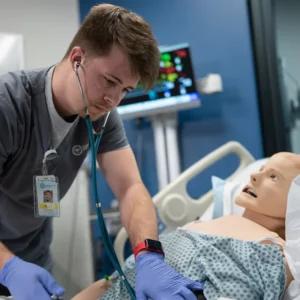 One of the most exciting things about pursuing a career as a certified medical assistant is that you’ll have access to a wide array of job opportunities after earning your certification. Among the more overlooked opportunities that this line of work offers is becoming involved in the world of sports medicine. This extremely interesting field offers certified medical assistants the opportunity of a lifetime to become involved in the training, injury management and consulting of athletes at all levels. If you think this is something you could be interested in applying your certification to, take a look at these few tips and best practices for entering the field:
One of the most exciting things about pursuing a career as a certified medical assistant is that you’ll have access to a wide array of job opportunities after earning your certification. Among the more overlooked opportunities that this line of work offers is becoming involved in the world of sports medicine. This extremely interesting field offers certified medical assistants the opportunity of a lifetime to become involved in the training, injury management and consulting of athletes at all levels. If you think this is something you could be interested in applying your certification to, take a look at these few tips and best practices for entering the field:
Consider working with an orthopedist
While certified medical assistants are used in a number of practices and businesses across the world, Exercise Science Guide has reported that they are most frequently employed under the supervision of orthopedists.1 Orthopedists are doctors who specialize in the diagnosis and treatment of musculoskeletal injuries, such as a pulled or torn tendon or a sprained ligament. Working with an orthopedist will offer you the opportunity to treat and interact with clientele from all walks of life. Perhaps even more beneficial, working with one of these doctors will also gain you valuable knowledge in a private practice environment – experience that you may be able to parlay into new opportunities in other medical fields down the line of your career.
Gain experience while receiving your education
You may want to try to consider setting up an externship at a local practice or clinic. While pursuing an externship with an orthopedist (as explained above) or sports trainer has a host of specific benefits, don’t be too eager to pigeonhole yourself into this category. At the end of the day, any professional experience is going to be better than none. Further, orthopedists, athletic trainers and other sports medicine professionals in need of medical assistants will be impressed with the initiative you’ve shown through taking on work experience opportunities during your education. If you have your heart set on interning in sports medicine but can’t land the right position, try taking a job or externship at a general clinic or hospital and doing private research or writing a paper on sports medicine. This way, you’ll still have something tangible to demonstrate your interest when it comes time to apply for full-time positions.
Set attainable goals and progress checkpoints
Landing a job as a medical assistant in sports medicine is a wonderful step in your professional development, but it’s far from your ultimate career goal. Once you’ve been working in this sort of capacity for a year or two, consider where you wish to take your career next. You could gain additional certifications and become a personal trainer or go back to school to become an orthopedist, physical therapist, or doctor who works with sports injuries. Depending on the networking opportunities in your area, you may even be able to find an opportunity with a professional sporting franchise. According to The Nest, job growth for medical assistants is expected at roughly 30 percent between 2010 and 2020, which means that opportunities within the industry should be abundant.2
1) Exercise Science Guide, ‘Medical Assistant (Sports Medicine Setting),’ 2/8/15
2) Greenwood, Beth, The Nest – Demand Media, ‘How to Become a Physician’s Assistant in Sports Medicine,’ 2014, http://woman.thenest.com/become-physicians-assistant-sports-medicine-19450.html



